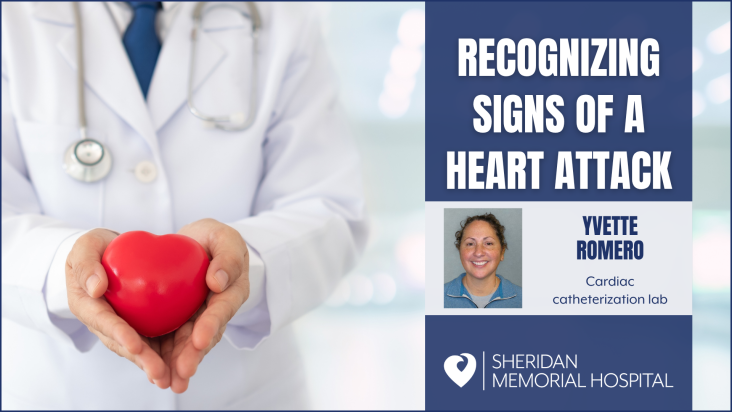By Yvette Romero, MSN, RN, a cardiac catheterization lab and interventional radiology nurse at Sheridan Memorial Hospital.
Heart disease remains the leading cause of death in the United States, and heart attacks—also known as myocardial infarctions — are one of its most urgent and life-threatening manifestations. Every 40 seconds, someone in the U.S. suffers a heart attack.
For rural communities like ours, immediate access to high-quality heart care can make the difference between life and death. That’s why the presence of a cardiac care team and a catheterization (cath) lab at our local hospital is a critical resource we should all be aware of and take pride in.
A heart attack occurs when blood flow to part of the heart muscle becomes blocked, often caused by a buildup of plaque in the coronary arteries. When the heart muscle is starved of oxygen-rich blood, it can begin to die within minutes. Prompt medical attention is essential to reduce the damage and improve survival rates.
Time is muscle
Don’t wait to get help if you have any warning signs of a heart attack. Some heart attacks are sudden and intense while others begin with mild pain or discomfort. You know your body best; read its clues and call 911 if you have:
Chest discomfort
Most people having a heart attack feel discomfort in the center of the chest that can last more than a few minutes or go away and then return. It can feel like pressure, squeezing, fullness or pain.
Discomfort in other areas of the upper body
Symptoms of a heart attack can also include pain or discomfort in the arms, back, neck, jaw or stomach. Other potential signs include breaking out in a cold sweat, nausea, rapid or irregular heartbeat and feeling unusually tired or light headed.
Having a cath lab in your community equipped to perform diagnostic and interventional procedures, such as cardiac catheterization and angioplasty, can make a big difference in how – or if – you recover from a heart attack. These procedures allow cardiologists to open blocked arteries, restore blood flow and prevent further heart damage without the need for major surgery.
Studies show that outcomes for heart attack patients are significantly better when treatment begins within 90 minutes of first medical contact.
Heart attack awareness is not just about recognizing symptoms — it also requires understanding the resources available and encouraging friends and family to seek timely care.
We are fortunate to have cardiac care right here in our own backyard. By staying informed and making use of these services, we can protect the health of our community for years to come.
Take your heart health seriously—schedule your annual wellness exam and follow your doctor’s guidance to manage risk factors like blood pressure, cholesterol, and lifestyle habits. And if you think you’re having symptoms of a heart attack, don’t wait—call 911 immediately. Quick action and local expert care can save your life.

